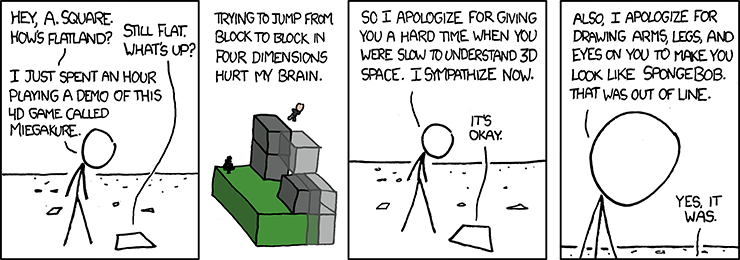| Submit | All submissions | Best solutions | Back to list |
FOLDCUBE - Fold the cube |

In order to represent a 3 dimensional cube in 2 dimensions it needs to be unfolded. We will always unfold cubes to look like this:
 |
-----
| 1 |
-------------
| 2 | 3 | 4 |
-------------
| 5 |
-----
| 6 |
-----
|
We don't know what orientation the cube was before it was unfolded. Based on the 2D representations of the cubes, we want to know if the cubes could have been the same in 3D after refolding and rotations.
Note that when refolding, we can fold the edges up or down. For example, if you fold the edges up, face 3 would be on the bottom, but if you folded the edges down 3 would be on the top.
Input
Each test case consists of two flatten cubes separated by an empty line. Each face of a cube is represented with a single lowercase letter. A cube can have multiple identical faces.
Output
Output same if they are the same, and different if they are different.
Examples
Input: b aba b b b bab b a Output: same
Input: b adc e f a adc e f Output: different
Input: a bcd e f a bfd e c Output: same
| Added by: | BYU Admin |
| Date: | 2015-11-04 |
| Time limit: | 1s |
| Source limit: | 50000B |
| Memory limit: | 1536MB |
| Cluster: | Cube (Intel G860) |
| Languages: | All except: ASM64 MAWK BC NCSHARP COFFEE DART FORTH GOSU JS-MONKEY JULIA KTLN OCT PROLOG PYPY3 R RACKET SQLITE SWIFT UNLAMBDA |
| Resource: | hackthe.computer |


 RSS
RSS